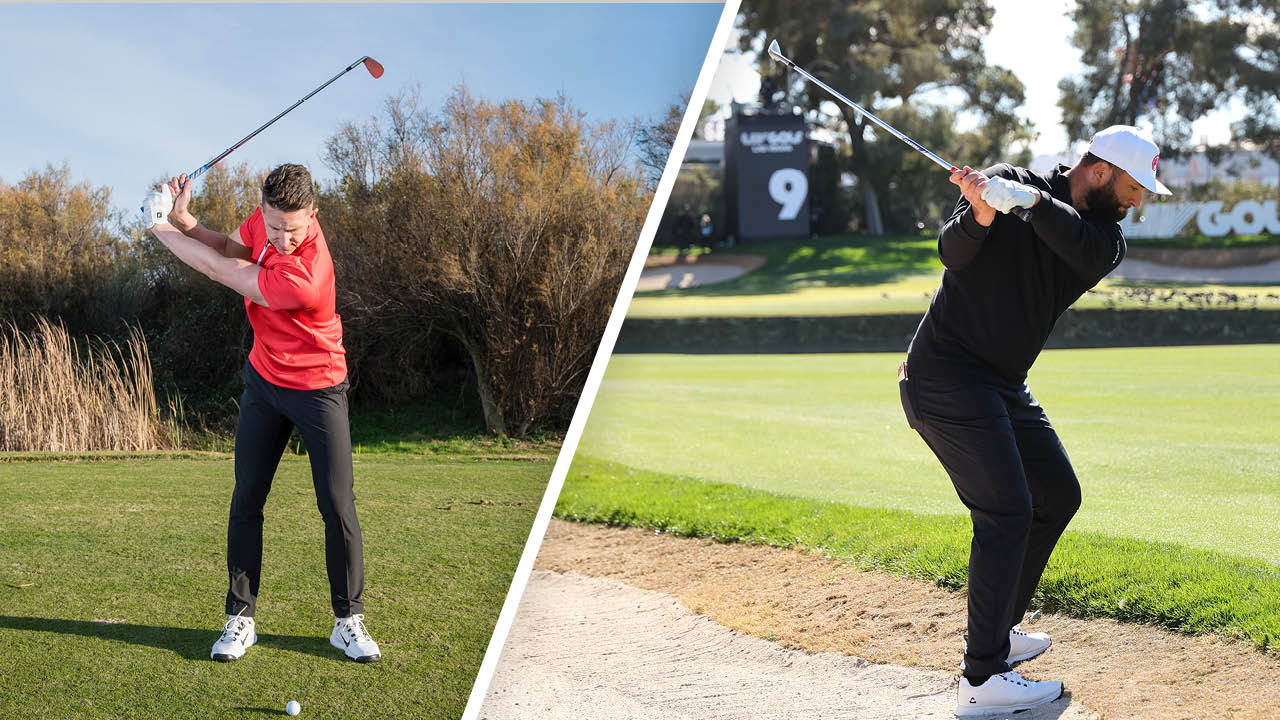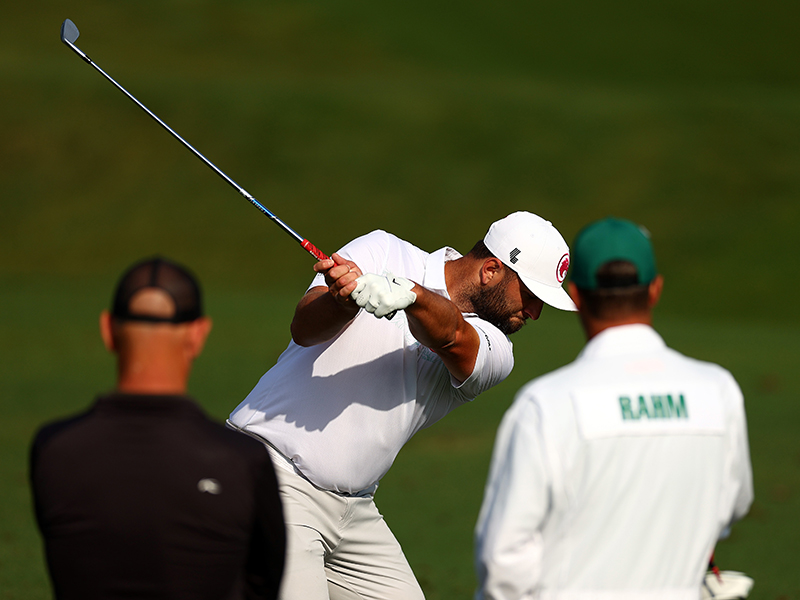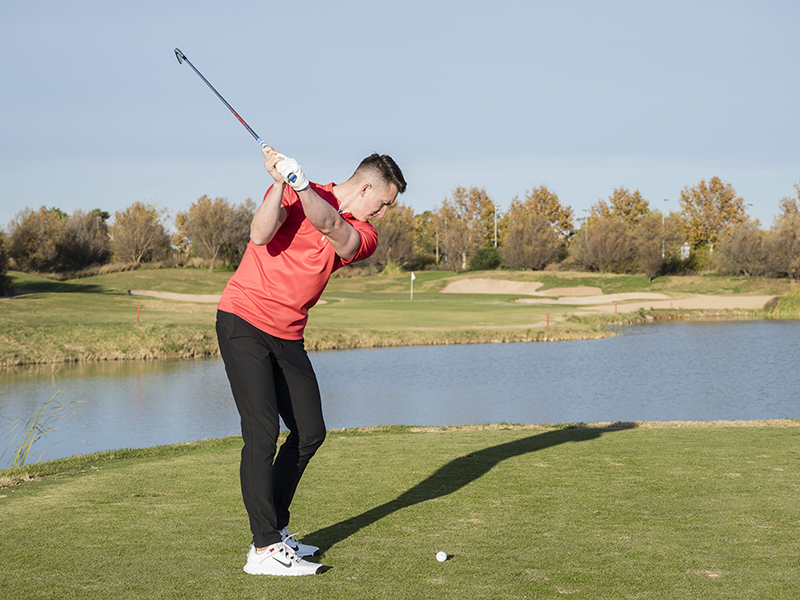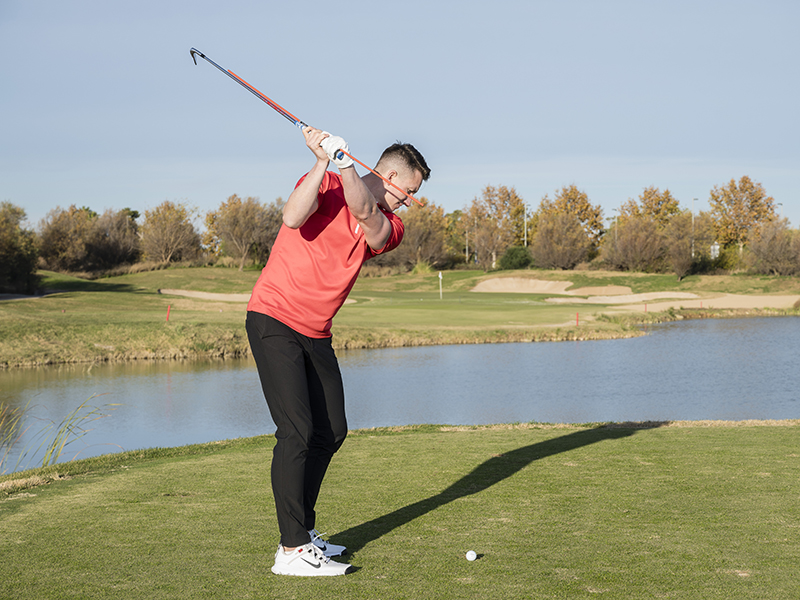This Easy To Spot Mistake Might Be Killing Power In Your Golf Swing...
Golf Monthly Top 50 Coach Gary Munro shares some simple tips to improve your ball striking by addressing one aspect of your golf swing...


Baz Plummer
A common perception among amateur golfers is that you need a really long backswing to generate more power in your golf swing, but that might be counter-productive.
It goes without saying that you need to nail the fundamentals, like using the perfect golf grip and ensuring you have the correct ball position for every club, but there is also a simple tweak that could add yards to your game and improve your ball striking.
In this video and article, Golf Monthly Top 50 Coach Gary Munro talks us through some simple golf swing tips to crush it every time...
How Do I Add Power To My Golf Swing?
The first thing you need to focus on as you try to add power is shortening your backswing. No-one makes a short, effective backswing work more powerfully than World No. 3, Jon Rahm. The Spaniard is a master at swinging the club efficiently and proof that you don’t need a massive overswing to hit the ball far.
When most golfers try to shorten their swings they typically get two things wrong. First, they forget to still hinge their wrists and second, they don’t make a full shoulder turn, therefore losing leverage and power. Master these two simple changes and you’ll have a controlled, powerful backswing move.

How Do I Shorten My Backswing In Golf?
Focus on feeling your right arm remains connected to your body. The club will be more laid of at the top, sitting slightly behind the hands. From here, it’s easier to bring the club down on a shallower line rather than it creeping in front of your hands in a more vertical position. When this happens, your body will have to make compensatory moves to realign the club.

Shorter Backswing Drill
Hitting balls with an alignment stick under your right arm can help you shorten your backswing. It stops your left arm from overrunning and travelling too far. You can also place the alignment stick alongside the club grip at address so it mirrors the shaft angle, then use the stick as a reference point at the top as here.
Subscribe to the Golf Monthly newsletter to stay up to date with all the latest tour news, equipment news, reviews, head-to-heads and buyer’s guides from our team of experienced experts.
As you swing to the top, look where the stick is pointing, or set your phone up to capture it. You’ll be amazed at how clear this visual is.

Which Tour Professionals Have A Shorter Backswing?
As we mentioned earlier in the article, perhaps the most famous example is two-time Major champion, Jon Rahm. He isn't the only top player to have a shorter backswing, however, as six-time PGA Tour winner Tony Finau also utilises this action to produce his phenomenal ball striking performances.
Rahm and Finau both rank in the top-13 for Strokes Gained: Tee To Green in the past twelve months, so their example is clearly not a bad one to follow.

Location: Pitch Golf London & Bedfordshire Golf Club
Gary is Director Of Golf at Pitch London. He is involved in the launch of the next Pitch site in Soho, which will open up the game to all levels. He is a big believer in equality and showcasing how fun golf can be for everyone. Gary has also coached at county level, and as County Manager has overseen a number of league wins for the U18s (Bedfordshire).
Teaching philosophy:
I don’t have a set model of swing that I coach and force on people - but impact and ball flight are everything, so I work it back from this. What impact characteristics does this player need to hit the shots and shoot the best score?
Advice for practice:
Split your practice into three sections: technical practice, skill practice (working on hitting different shots, for example, high, medium, low shots and shaping the ball) and finally pressure practice.
Students learn best when…
They self-discover. I don’t believe in coaches jumping on a player shot by shot giving more and more conflicting information, which can become confusing. I like my players to learn about their tendencies. I ask questions, allowing them to learn when they move well and why it’s good. I do the same for bad shots and ask them what they think caused that. Let them self-evaluate an answer so they develop the skill.
- Baz PlummerStaff Writer